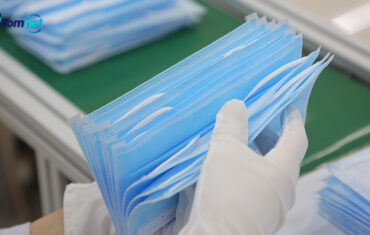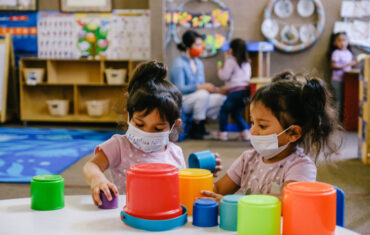The novel coronavirus that causes COVID-19 spreads easily. When someone coughs, sneezes or talks, respiratory droplets are released into the air. If these droplets contain the virus and make their way to your nose or mouth, you can get sick. It’s easy to see how a chain reaction can quickly take place from there. That’s why the CDC recommends wearing face masks in public, particularly when social distancing can be difficult. But, what’s the difference among the various types of masks. And which will provide the protection you and your child need?
Types of face masks to protect you and your child against the coronavirus (COVID-19)
Cloth masks
Cloth face masks are what the CDC recommends for everyday use by the general public, including adults and kids. They do offer an added layer of protection when it’s difficult to stay six feet from others, such as at the grocery store or pharmacy. People can purchase cloth face masks or make at home from common materials. You can use extra fabric you may have on hand, or an old t-shirt, pillow case, tea towel, bandana or scarf. Make it fun by choosing fabric with your child’s favorite color, animal or sports team. The fabric can be secured with ties behind the head or held in place with elastic ear loops.
For maximum safety, cloth face masks should:
- Fit snugly, but comfortably
- Contain multiple layers of fabric
- Be secured with ties or ear loops
- Allow for unrestricted breathing
- Be washed with hot water after each use
N95 respirators
N95 respirators are tight-fitting masks that block out sprays, splashes and large-particle droplets. They can also filter out 95% of very small particles, such as those in bacteria and viruses. The U.S. National Institute for Occupational Safety and Health must evaluate and approve N95. They also need to be professionally fit-tested to ensure a proper seal around the nose and mouth. For this reason, as well as their limited availability. N95 respirators primarily should be reserved for health care workers who are caring for patients with infectious diseases.
Surgical masks
They are made of a paper-like material. Surgical mask manufacturers design them to block sprays, splashes and large-particle droplets. Wearers use them to prevent from reaching the mouth and nose of others. There is a thin metal strip at the top of the mask that can be bent around the nose. However, they can not block tiny particles. You may see healthcare providers wearing a surgical face mask along with face shield to provide extended protection. Surgical face masks should be discarded after each use, or sooner if they become visibly soiled.
Other face masks options
There are other options for face masks that can help block some particles. Dust masks from hardware stores look similar to N95 respirators but don’t filter to the same degree. They provide protection comparable to a cloth covering. A neck gaiter could also work when folded into multiple layers.
Safely removing your mask
Take off face mask when you are finished wearing it, or if it gets damp or visibly soiled, using the following steps:
- Pull it off by the back tie or ear loops rather than touching the front of the mask. Because the front is where the germs are.
- Be careful not to let the front of the mask come into contact with your eyes, nose or mouth when removing it
- Surgical face masks or dust masks: place in a bag and then in the trash
- Cloth face masks: wash with hot water and soap or detergent
- Thoroughly wash your hands after removing face mask






